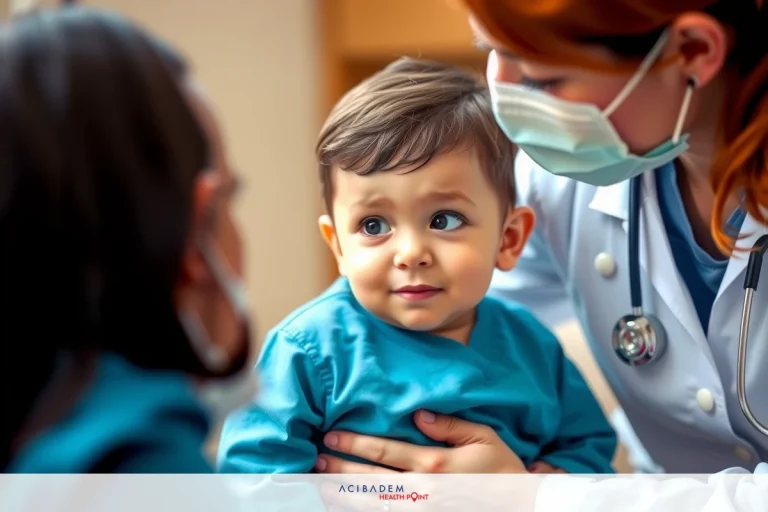How can early detection improve retinoblastoma outcomes?
How can early detection improve retinoblastoma outcomes? Early spotting of eye health problems in kids is key. It can lead to better results and more options for care. Doctors say catching retinoblastoma, a rare eye cancer, soon after it starts makes a big difference. When parents know what symptoms to look for they help their child’s chances greatly.
Spotting retinoblastoma early means treatments can start right away. Treatments work best when the disease has not spread too much. Parents and doctors working together set kids up for the best possible fight against this illness. Everyone wants children to grow up healthy and strong.
Kids with early treatment tend to keep their vision and have fewer side effects later on. They also need less intense therapy compared to those found later on. Knowing about your child’s eye health supports their overall well-being now and in the future.
Signs and Symptoms
The first signs of retinoblastoma often show up as unusual reflections in the eyes. In photos you might see a white glow where there should be red-eye. This can be a clue that something is not right with your child’s eye health. It’s key to know this sign for early detection.
Another symptom parents may notice is a change in eye color or a lazy eye. The pupil, which should be black, may appear white or have spots. This change happens when the tumor reflects light differently from healthy tissue. Such changes call for quick action to improve outcomes.
Children might also start to cross their eyes without meaning to do so; doctors call this strabismus. If an eye starts wandering or they seem to struggle with vision it’s time for a check-up. These symptoms don’t always mean retinoblastoma but checking them out helps keep children safe.
If your child complains about their vision suddenly getting worse, listen closely. They may say things are blurry or they can’t see well at all on one side. Persistent problems like these warrant urgent attention for the sake of children’s health and peace of mind.
Importance of Early Detection
Finding retinoblastoma early can save a child’s sight and, more importantly, their life. The sooner it is found the smaller the tumor will likely be. This means that treatment can be less invasive and more focused. It also leads to a higher chance of keeping vision intact.
With early detection of retinoblastoma doctors have more ways to treat it effectively. They might use laser therapy or freezing methods when the tumor is small enough. These treatments are often not as hard on children’s bodies compared to options for larger tumors.
When treatment starts early children miss out on less school and playtime too. They spend fewer days in hospitals and get back to being kids much faster after procedures. Plus families feel less stress when they catch health issues before they grow bigger.
Knowing about eye health helps with finding other problems that may come up later on in life. Parents who learn about signs and symptoms keep an eye out for their child’s well-being long term. Children then grow up

informed about how important regular check-ups are for good health.
Diagnostic Procedures
Doctors have special ways to look for retinoblastoma in kids. An eye exam is the first step where they check how pupils respond to light. They also look for any signs of tumors or abnormalities inside the eye. Sometimes they use drops to widen pupils for a better view.
Imaging tests play a big role in spotting retinoblastoma too. Ultrasounds can show if something is wrong with the structure of the eye. MRI scans give clear pictures of both eyes and can reveal if cancer has spread.
Genetic testing might be done since some kinds of retinoblastoma are linked to genes passed down in families. A simple blood test can tell doctors more about this risk factor. Knowing this helps plan out treatment and keep an eye on children’s health as they grow up.
Treatment Options
Many treatments are available for retinoblastoma each with its own benefits. Laser therapy, also known as photocoagulation, can destroy tumor vessels that feed the growth. This method is effective for smaller tumors and often spares healthy eye tissue.
Cryotherapy uses extreme cold to freeze and kill cancer cells in early-stage retinoblastoma. It’s a good choice when the tumor is small and easy to reach with this tool. Multiple sessions might be needed but it works well to keep the disease from spreading.
Chemotherapy might be used if the cancer is more advanced or in both eyes. These drugs travel through the body to target all affected areas at once. While side effects exist modern medicine has made chemo safer for children now than in past years.
Another option includes radiation therapy which directs high-energy beams at cancer cells. New techniques make sure rays focus on tumors while saving nearby parts of the eye from harm. It helps prevent damage that could affect vision later on.
Sometimes doctors may suggest surgery as a treatment too especially if other methods don’t stop the tumor’s growth. Removing an eye can sound scary but it’s done to save a child’s life when necessary. Afterward kids get prosthetics that look like real eyes so they feel confident as they heal and grow up.
Support and Resources
After a retinoblastoma diagnosis finding the right support is crucial. Many hospitals have teams that help families understand the disease and its treatment. These experts can guide parents through each step of their child’s journey to better health. How can early detection improve retinoblastoma outcomes?
Support groups offer comfort to those facing similar challenges with retinoblastoma. Hearing from other families who have been through this can be very reassuring. They share tips on coping with treatment and keeping life as normal as possible for kids. How can early detection improve retinoblastoma outcomes?
Resources for financial aid are also available because care costs can add up quickly. Organizations often provide assistance to make sure children get the treatments they need. It’s okay to ask for help. It’s there so your child can receive proper care. How can early detection improve retinoblastoma outcomes?
Educational materials about eye health are important too especially after early detection of retinoblastoma. Parents learn how to manage their child’s condition at home and what signs to watch out for in future checks- ups. Staying informed helps keep children safe and healthy in the long run. How can early detection improve retinoblastoma outcomes?
Lastly mental health professionals should not be overlooked during this time of healing for both kids and parents. Counselors trained in dealing with childhood illnesses offer strategies to cope with fears or sadness related to cancer treatment. Their guidance improves overall well-being as families navigate these tough times together. How can early detection improve retinoblastoma outcomes?
Frequently Asked Questions
Q: How is retinoblastoma detected in very young children? A: Doctors use certain eye exams that can be done even on babies. They look for signs like a white glow in the pupil or crossed eyes.
Q: Can children with retinoblastoma still have normal vision after treatment? A: Many kids do keep their sight if the cancer is caught early and treated right away. Each child’s case is different though.
Q: What are the chances of retinoblastoma coming back after it’s been treated? A: It depends on many factors but following up regularly with your doctor helps catch any return early on.
The answers provided here are for informational purposes only and do not constitute medical advice.









